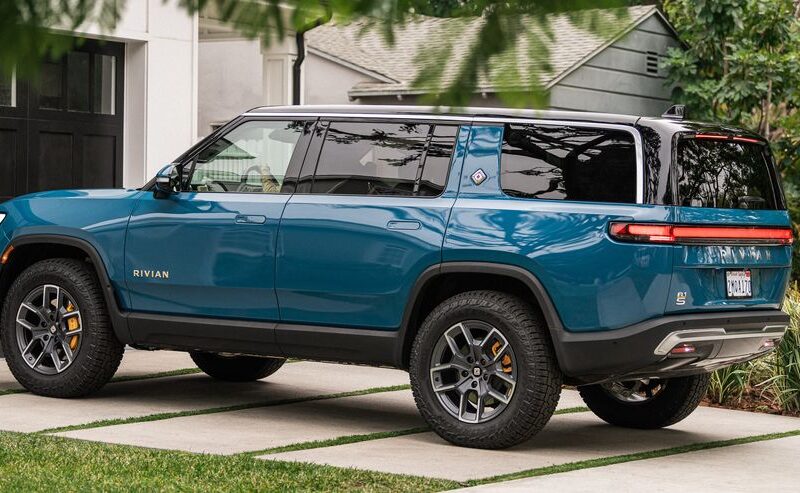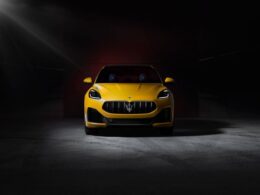The R1S is excellent to drive, fantastic off-road, and still less expensive than its mainstream rivals.
Call me cynical. The first flush of mind-blowing acceleration, quietness, and technological novelty is waning, though, since it seems like every other new car I examine is an EV. It’s always the Rivian R1S that serves as a reminder of how unique and unexpected an EV may be.
Time will tell if Rivian can recover from its early setbacks and grow into a reputable carmaker. (Rivian Skeptics may at least remind themselves that even Tesla wasn’t an overnight success; every successful carmaker started tiny and from scratch.) But nothing in the marketplace compares to the R1 for those who can afford a large luxury SUV. The Rivian makes a case for being the sharpest-handling three-row SUV on the market, even though the standard for circus elephants may seem low. Only the Tesla Model X Plaid, which costs about $50,000 more and accommodates seven adults instead of the Tesla’s four plus two children, can match its acceleration. If you act quickly, you still have time to change your Model X order since the Rivian is superior in almost every important regard, including design, luxury, internal space, agility, and off-road prowess.
The 845-horsepower R1S will sprint to 60 mph in 3.1 seconds, much like Rivian’s physics-defying R1T. It handles like a dream, at least ones that involve 3.5 tonnes of SUV joy, thanks to a cross-linked electrohydraulic anti-roll system that is reminiscent of McLaren’s. With precise control from four electric motors and up to 15.0 inches of maximum ground clearance with a securely sprung air suspension, the R1S shines on sand, mud, water, or rocks. Despite being four inches shorter, the large Riv’ also offers more interior and load room than a long-wheelbase Range Rover and outperforms the Rover’s respectable on- and off-road performance.
In fact, the Rivian shoots them all down like a carnival trickster, including the BMW X7, Mercedes GL-Class, Cadillac Escalade, Lincoln Navigator, and Jeep Wagoneer. On the pavement, only the $106,095 BMW iX M60i seems quicker and more like a vehicle, thanks in part to the fact that it weighs approximately 1,200 pounds less than the 7,000-pound Rivian. The BMW in question is a smaller, two-row SUV, and its primary concern is passing the street driving test. Even that 532 hp BMW loses 313 hp to the Rivian and accelerates more slowly in a straight line (3.6 seconds to 60 mph). In comparison to the Mercedes EQS SUV, the Rivian destroys it in terms of power, handling, and off-road prowess. It also carves out more interior and baggage space, including a sizable 11 cubic-foot trunk compared to the Mercedes’ nonexistent trunk. At $91,500 for an R1S Adventure with Quad Motor propulsion and “Large” 128.9 kWh battery pack, you can have all of that for over $36,000 less. My fully equipped Adventure model cost $101,500, excluding just extras like a Yakima tent. That contrasts with $127,100 for the 536-hp EQS 580 4Matic, the only Mercedes model that is even nearly close, before the first option is added.
The R1T has a 316-mile range, according to the EPA, and comes with 21-inch wheels and all-season tyres. Stylish 22-inch wheels and livelier tyres, as well as 20-inch wheels with Pirelli Scorpion all-terrain tyres, have a minor negative impact on mileage. For a starting price of $79,500, more inexpensive R1S models with an upcoming dual-motor, in-house drive unit ought to provide more than 600 horsepower, 600 pound-feet of torque, a 4.0-second 0-60 time, and around 260 miles of range. Rivian no longer offers the base-model Explore versions that were formerly promised. However, the business anticipates that a “Max Pack” model with a lot of batteries would have a class-beating range of roughly 400 miles.
From the B-pillar onward, everything is virtually identical to the R1T both inside and out. However, there are now five interior combinations available, including the idyllic “Forest Edge” with green imitation leather. The all-new Range Rover is still an SUV superyacht on the level of a Succession. The Rivian doesn’t, however, have the same air of cost-cutting that permeates the GMC Hummer EV truck; it still looks modern and welcoming. The “Black Mountain” interior of my test model exuded opulence and virtue thanks to its rich-grained, recycled black ash wood and coppery trim. The Eames could give their blessing to seats with attractive sectioning and patterns. Even with too costly steering-wheel thumbwheels to adjust the wheel, vents, and external mirrors, Rivian’s traditional, two upright displays offer substantial screen space and fairly easy controls. (In Rivian’s defence, how frequently do you actually need to mess with those features once they are configured to your liking?) Two phones may be charged simultaneously on a wireless charging pad in the centre console’s clamshell design. The desultory steering wheel itself is the only significant interior issue I have: I was reminded of the Ford Bronco’s parts-bin until by its passenger-car form and grip, which represented a missed opportunity to make a daring or dramatic statement.










